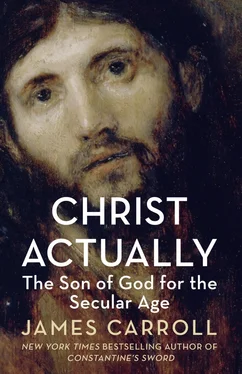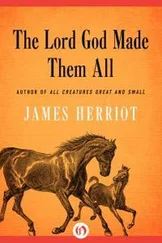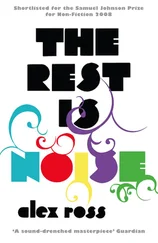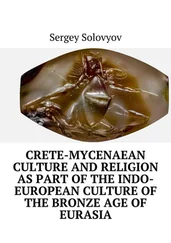Since well before Bonhoeffer, Christian scholars have known there is a problem here. But ever since Bonhoeffer—and the crisis of the war—theologically minded historians, together with historically attuned theologians, have been driven to do heroic work in addressing that problem. We will see that. But scholarship aside, a complete transformation of popular consciousness and faith has yet to occur. If our reach is toward such a transformation here, still our reckoning with the full Jewishness of Jesus Christ will mark only the start of the story, not its end point. Taking my own case as typical, I thought years ago that I understood the meaning of the Jewishness of Jesus, having been ambushed one afternoon in the Art Institute of Chicago, for example, by the sight of the French-Jewish artist Marc Chagall’s White Crucifixion, a large painting of the crucified one draped not with the familiar loincloth but with a Jewish prayer shawl. The cross rises up from a lit menorah, and the figure is surrounded by fugitives dressed in recognizably Jewish garb, terrorized by raging fires. I read, presumably on the artwork’s posted identity card, that Chagall had painted the work in 1938, in response to Kristallnacht. Jesus was a Jewish victim! But that recognition came to me in the tumultuous 1960s, when it seemed the most natural thing in the world to see Jesus, even more dramatically, as a kind of Che Guevara Jew, in rebellion against the corruptions of most fellow Jews and a Jewish establishment that saw to his killing. That perception was a block to what Chagall revealed. Who the victim? The line from Sophocles came to me, first, in this connection: “Who is the slayer, who the victim? Speak!”
The so-called Dead Sea Scrolls marked the start of a scholarly transformation and ultimately, in my case, a personal one—a decisive illumination of the context within which Jesus lived. Having been discovered beginning not long after the end of World War II, 37the ancient texts produced whole libraries of studies demonstrating that in the time of Jesus, there was not one “Judaism,” but a multiplicity of Judaisms. Various Jewish groups of that ancient era vied with one another, sometimes violently, over such questions as: Who is the “true Israel”? What is the Temple’s place? How is the Law to be kept? Given such a context, it can now be seen that Jesus in conflict with fellow Jews over just such questions was not anomalous, but typical. If he was a rebel, it was for the cause of his people. His participation in intra-Jewish disputation—arguing with Pharisees, for example, over what was permitted on the Sabbath—underscored his integrity as a defender of Israel, not its opponent. The Christian mistake—mine—has been to miss that context of intra-Jewish tension. Even today, what is more Jewish than the argument over what it is to be a faithful Jew?
In other words, the post-Holocaust task, deriving from Dietrich Bonhoeffer’s rudimentary insight, is to make the Jewishness of Jesus the first lens through which to view him. This means, perhaps, putting aside for a time—and this is rarely done—the viewfinders of the four Gospels, all of which are usually read to locate the heart of his conflict with “the Jews” in his rejection of Jewish cult and Law. Our view of Jesus must come into focus around a new organizing principle: nothing we say or believe about “Christ actually” can be allowed to exclude the authenticity of his profound and permanent participation in the life of Israel.
Twice a day, Jesus pronounced the Shema. 38Every Sabbath, he read the Torah—or, if he was illiterate, 39was present for its reading. He believed that God’s Torah was given to God’s people, Am, to be brought to life in God’s land, aretz. 40As regularly as he breathed in oxygen, he took in God’s saving history. At least once a year, at Passover, his attention turned to the Temple in Jerusalem, for the burnt offerings of animals while Psalms were sung. He observed purity and revered the Temple. And if, as most Jesus historians still assume, he enacted a “cleansing” demonstration of some kind there, it was less likely an attack on the purity system of the Temple, as the story is usually read, than a defense of it. We will see more of that.
Jesus must not be imagined, in sum, as a pretend Jew, any more than he can be regarded as having been a pretend human being. If he preached the good news of love; of the trustworthiness of God, who is like a father; of the Kingdom of God 41present here and now, he did so from within Judaism, not against it. He preached not a New Testament God (of love) in opposition to an Old Testament God (of judgment), 42but one God: the God of Israel, pure and simple.
But for Christians to actually accommodate such an adjustment in their view of Jesus, they would first have to confront the indictment of their own most sacred tradition that is made explicit in the catastrophe of Christian anti-Semitism. Here is why the extensive postwar revisions by scholars—historians and theologians both—have had so little impact on the minds of ordinary Christians. Here is why, in the Catholic context, the theological transformation conceived at Vatican II was all but stillborn. 43This failure to reckon with an essential Christian failure about the Jews, for that matter, is at least part of why the spirit bled from mainstream Protestant denominations in the decades after the failure showed itself. And it is why the only form of Christian belief to actually grow in these years—evangelical fundamentalism—is a faith dedicated to the restoration of the very biblical literalism that put “Christ killer” Jews at risk in the first place. To actually change their understanding of Jesus Christ, that is, Christians would have to far more fully confront the Church’s own ancient and ongoing betrayal of Jesus, the one that makes such change necessary.
It is curious that Christians should find it so difficult to imagine that both ordinary members and consecrated leaders of the Protestant and Catholic churches alike should have grievously let their Lord down in the twentieth century’s Nazi era, since the Gospels emphasize that, in the first century, the entire inner circle of Jesus’ followers abandoned him in his hour of need. Over time, the ubiquity of such failure by “the faithful” was de-emphasized to the point of being forgotten as the Church developed its mechanisms of self-canonization. But, because of sand thrown by history, those mechanisms are stuck.
The history in question, of course, includes not just failures of the followers of Jesus, early and late, but also the counterbalancing glories of sustained intellectual inquiry. That project—faith seeking understanding—steadily promoted new levels of human wisdom, but ultimately, with the coming of rationalism at the time of the Enlightenment, it also undermined traditional notions of nature and the supernatural, a development that had to affect understandings of Jesus. So this book, about belief in the Secular Age—like any work on the topic—has necessarily been provoked by challenges arising from science, but that is not its primary stimulus. Far more gravely, this reflection aims to reckon, for the sake of faith, with the tragic compulsions of human behavior.
There are, to be sure, intellectual obstacles to traditional faith, but many otherwise “modern” believers have accommodated those, if only by leaving critical reflection and historical-mindedness outside when they pass through the door of the church. Yet in the twenty-first century, ethical obstacles to belief have become increasingly difficult to ignore. Moral anarchy has shown itself in sanctuary after sanctuary, whether one considers the descent of strains of Eastern Orthodox religion into Islamophobic brute nationalism (think of the recent Balkans wars, in which genocidal attacks on Bosnian Muslims by Orthodox Serbs were religiously justified); or the ongoing Roman Catholic blasphemy of a power structure protecting priestly child abusers instead of their abused victims; or the evangelical Protestant embrace in America of know-nothing bigotry against immigrants. Whatever Christ is preached by such churches, what Christ can actually be seen through them?
Читать дальше












